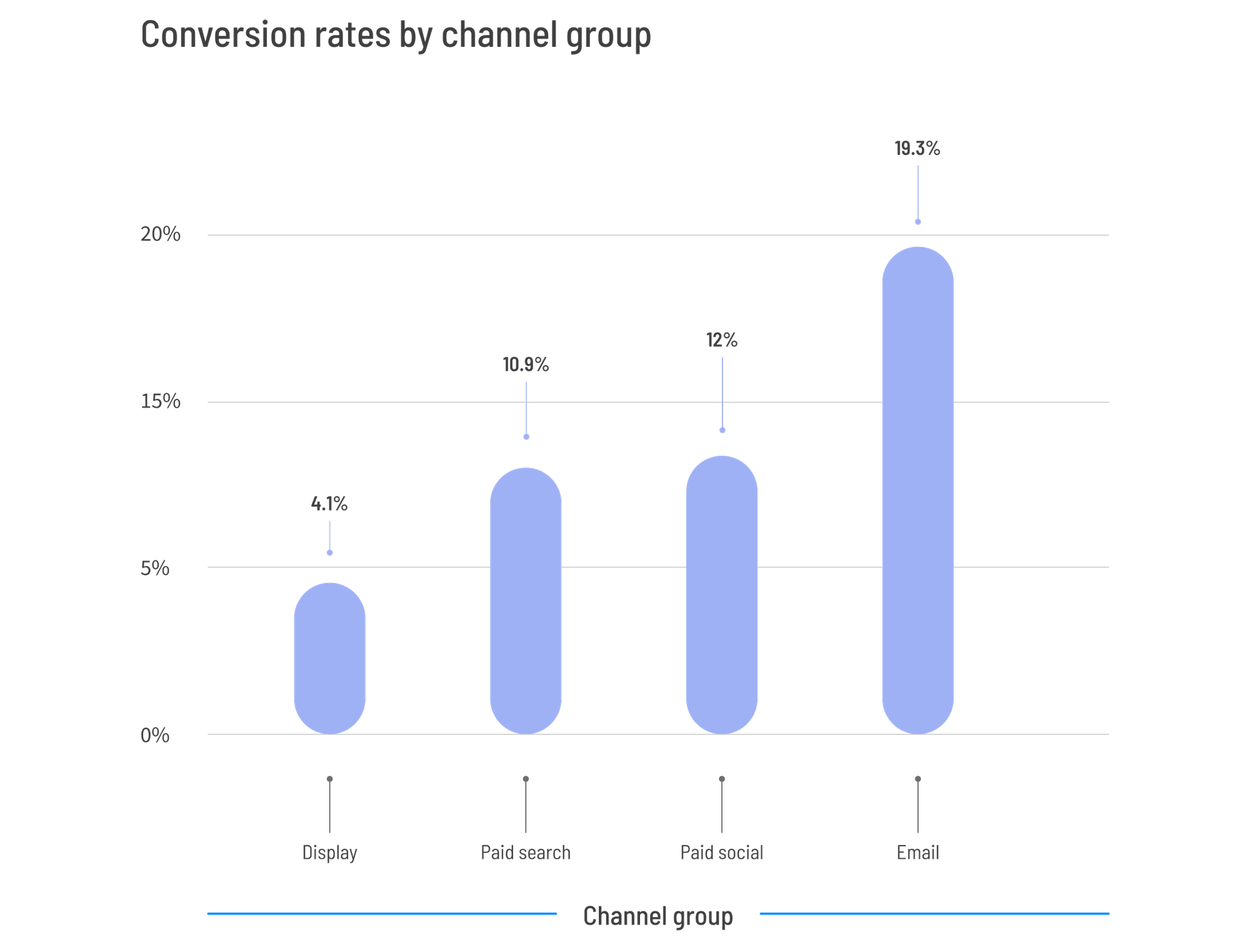When I first meet with a science company to discuss their marketing strategy, I often get questions like, 'What should our strategy be? Should we focus on content or paid ads? Why aren’t people buying our product?'
The truth is, I tend to see the same challenges across different companies. These problems are often obvious to someone from the outside but are hard to spot for marketers who are overwhelmed with day-to-day tasks.
Most of the time, the solution isn’t about doing more—it’s about stopping to assess. Take a step back, even if it means slowing your marketing efforts for a few weeks. The clarity and precision you’ll gain in the long run will be well worth it.
So, in today’s article, I’ll highlight some of the best practices marketers often overlook, so you can apply them to your own strategy.
Let’s dive in!
1. Attributing revenues
One common mistake I see with nearly every client is the lack of proper revenue attribution. Revenue attribution involves linking each new deal with a customer back to the specific acquisition channel that brought them in. From the moment a lead is generated, you should tag it with the acquisition channel and campaign through which they converted. By tracking this data all the way through your sales funnel, you'll know exactly where your revenue is coming from and which campaigns deliver the best ROI.
Many companies confuse traffic attribution with revenue attribution. They can tell how much traffic and how many leads each campaign generates, but they often can’t tell which campaign is driving actual revenue.
But here’s the hard truth: Knowing that a campaign brings more traffic or leads is nearly useless if you don’t know how many of those leads convert into paying customers.
Let’s take this example to show you why: let’s say a company is spending the same budget on both search and display ads. Both generate traffic and leads, and in this case, display ads bring 20% more traffic and leads than search ads.
But here’s the catch—this company tracks conversions through the sales funnel and sees that leads from search ads convert 80% of the time, while leads from display ads convert only 50%.
So, if they generate 100 leads from display ads, they’ll convert 50 customers. However, the 80 leads from search ads will result in 64 customers.
If this company had to choose a channel to scale its marketing spending, search ads would be the better investment. Without revenue attribution, you’re certainly wasting money on the wrong channel, because you’re focusing only on traffic and lead volume.
2. Defining your personas
You can’t sell to everyone—not even to every scientist out there. Your target audience will always have specific characteristics that create patterns, helping you identify who is most likely to become a customer. This is what we call a persona. Surprisingly, many science companies overlook the importance of building clear personas.
While I plan to write a full guide on creating personas for science companies someday, here’s a quick summary of how to do it:
- Quantitative analysis: Start by analyzing your existing customer base. Break them into groups based on metrics like annual contract value, lifetime value, and average spend per deal. Also consider how frequently they use your product—daily, monthly, etc. The goal is to find trends in who spends the most and who uses your product most frequently.
- Qualitative analysis: This is the fun part—reach out to your customers and interview them. Your aim is to get detailed insights into why they buy your product and how they use it. The best approach is to pick a few individuals from each group identified in your quantitative analysis and use them to build your personas.
- Create your personas: Based on the interview responses, build personas that represent your key customer segments. Share these personas with everyone in your company and make sure they’re visible—post them in the office or wherever your team will see them regularly.
Keep in mind that personas evolve over time, so you’ll need to revisit this process regularly. But once established, they become a powerful tool to better understand and serve your customers.
3. Simplifying your message
Science companies have a problem with buzzwords. Every company website touts a “ground-breaking” or “disruptive” technology, but let’s be honest—if your product were truly that revolutionary, you wouldn’t need to send your sales reps to every conference to find new customers.
Using overly technical or vague language on your website doesn’t help either. Effective copywriting is about delivering a clear, concise, and targeted message that communicates the specific value of your product or service.
So, grab a clean sheet of paper and rewrite your messaging from scratch. This time, ditch the buzzwords and focus on keeping the message simple and direct.
4. Offering training
Science-driven products often require extensive training and support, yet many companies overlook offering free training to their users. This is a huge missed opportunity!
If you're selling a piece of equipment that costs tens of thousands of dollars, you could at least spend a few hours a year teaching your users best practices.
Offering training benefits both your customers and your business. First, it’s a strong marketing tool—promoting free training builds trust with potential customers, as they know they’ll receive hands-on support to get the most out of your product.
Plus, by staying closely involved with how customers use your product, you'll gain valuable insights to improve your messaging or develop new features that make your product even more competitive.
5. Relying less on events
Over-prioritizing in-person meetings and events limits your scalability. Your sales rep can only stretch as far as a few events per month, and even that means they’ll mostly spend time away from home, which doesn’t fit everyone’s lifestyle.
Instead of trying to be everywhere, start by analyzing how much you spend and try to get a clear return on investment for each event. Attributing revenues generated to each event could help you clear the board and only spend time where it actually makes sense.
Too often, companies fall into the habit of attending the same events year after year, without questioning why. I’ve rarely seen a company get really introspective and be able to tell exactly the return they make from each event.
6. Working with R&D
Science companies often keep R&D and marketing strictly separate, as if the two can't coexist. This is a big mistake.
If marketing doesn’t communicate with R&D, how can they fully understand the product or stay informed about upcoming innovations? Likewise, if R&D isn’t aligned with marketing, how can they know what customers truly need?
Building a closer relationship with R&D is also a goldmine for marketers. You can leverage this collaboration to create valuable content, like behind-the-scenes lab tours, interviews with scientists, or sneak peeks at new product developments. This creates a more authentic brand and builds anticipation with your customer base.
7. Getting started with content marketing
One reason science companies struggle with content marketing is that they never fully commit to it. Content marketing is like a diesel engine—it’s slow to start, but once it’s running, it’s got real power.
The longer you delay starting, the harder it becomes, especially if your competitors are already ahead.
Getting started isn’t the hard part—it’s staying consistent. So make sure that you have a concrete content production plan for the coming months and the necessary budget to deliver what you’ve planned.
8. Building a newsletter
According to a recent survey analyzing over 57 million landing page conversion events, email remains the highest-converting channel, with an average conversion rate of 19.3%.

Yet, very few science companies really invest in a newsletter strategy—or worse, they think they do, but fail to execute it effectively.
Starting a newsletter should go hand-in-hand with your content marketing strategy, with the goal of delivering actionable content your audience can use. So stop sending emails to promote your latest product update or tell people you'll be attending the next big conference. That’s not a newsletter strategy—that’s just advertising. If you want people to willingly subscribe, your newsletter needs to offer real value, not just promotional content.
9. Surveying your customers
I love surveys! Yes, they're hard to set up because you have to get it right the first time, and it's not always easy to get a high number of responses, but still, I learn so much every time I run a survey that it often triggers an important decision that will affect my business in the long term.
Surveys are the best way to get a quick feel for what's working and what's not with your product or service. While they don't provide the depth of customer interviews, they're great for answering lingering questions or confirming decisions you're considering.
I believe every marketer should conduct a survey at least once a year, if not twice. To boost response rates, keep your survey short and offer a few incentives, like coupons or prizes. It always helps!
10. Connecting with other science marketers
Science marketers tend to be lone wolves, and it’s not surprising. In many mid-sized companies, they’re used to handling everything on their own—a common challenge my readers frequently mention! This can also stem from their “black sheep” status, as scientists view them as having crossed over to the dark side, while business development teams may see them as only good for posting on social media.
But you’re not alone! Connecting with other science marketers could be one of the best decisions you make this year. I think I'm a bit privileged because thanks to this newsletter, I talk to other science marketers on a daily basis and I learn so much from each of them that my learning curve is still steep.
But that doesn't mean you can't do the same on your own scale. Start by checking your LinkedIn account for other science marketers in your network. Reach out and offer to have a quick chat to exchange ideas and best practices (it helps if they’re not competitors). Also, consider connecting with marketers in other science-driven industries. I'm becoming increasingly aware that there is a lot of knowledge from deep tech industries that could be transferred to life sciences, for example.
And if you don't know who to contact, just drop me an email, I always reply.
11. Reviewing your work
Finally, I always recommend that marketers carve out time to regularly review what’s working and what’s not.
I know, it’s not easy when you’re the person in charge of managing content production, posting on social media, preparing event collateral, running customer surveys and so on. But you have to take the time to analyze, otherwise you’re just running blind without being able to adjust your trajectory.
Set aside 30 minutes at the end of each week to review your work. Take notes on the results of your experiments—preferably in a spreadsheet so you can easily track progress over time. Then, schedule a more in-depth session each month to dive deeper into the data and adjust your roadmap as needed.
It may seem like you can't afford it, but making time for a weekly review will actually save you weeks, if not months, of hard work down the line.
It's often the best way to spot the obvious when we're overwhelmed by day-to-day tasks.





